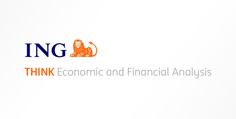More turmoil in the UK bond market has seen the Bank of England step in with another emergency measure, this time to support battered inflation-linked bonds. Today's 30-year linker auction and speech by Governor Andrew Bailey will be key to watch, but GBP/USD looks too strong at 1.10 considering the fragility of the bond market. USD to stay bid across the board
US Dollar: Dismissing slightly less hawkish tone by Brainard
Despite reduced volatility due to the US markets’ closure yesterday, the generalised risk-off environment saw the dollar start the week on the front foot. The worst performers since the weekend are the Antipodeans and the Swedish krona, which is a testament to how the two poles of the market's economic and geopolitical concerns – China and Europe – are affecting proxy trades in G10. US fresh trade restrictions on Chinese chip exporters and an escalation in missile strikes in Ukraine following the Crimean bridge blast look set to keep such proxy trades unattractive for now.
In the US, we heard some slightly less hawkish comments by Fed officials yesterday. Admittedly, they did come from two of the most “dovish” members of the FOMC – Lael Brainard and Charles Evans – who both seemed to suggest a higher caution over excessive tightening, while still reiterating the commitment to fight inflation. There is still little doubt among market participants that the overall consensus within the FOMC is firmly hawkish, and that a 75bp hike in November should not be particularly challenged by doves.
The US calendar includes the NFIB Small Business Optimism survey and a speech by the Fed’s Loretta Mester (expect more hawkish remarks here). We continue to see the general market narrative as predominantly dollar-positive for now, and expect the 114.76 DXY late-September highs to be tested in the coming days.
Euro: Assessing implications of EU joint debt issuance
The euro received negligible help yesterday from the (unconfirmed) news that German Chancellor Olaf Scholz has ultimately given support to a joint issuance of EU debt to fund measures against the energy crisis, with the condition that funds are distributed as loans and not grants. The market impact should be quite straightforward: positive for peripheral spreads (Italian bonds rallied yesterday), negative for EZ core rates, and potentially fuelling speculation of more ECB tightening if the Bank views these measures as inflationary. For the euro, the net impact may well be neutral in the near term, potentially positive in the longer run.
Today, the eurozone’s calendar is quite light, but some interest will be on speeches by ECB’s Chief Economist Philip Lane and Governing Council Member Francois Villeroy. We still see EUR/USD declining into the 0.9540 September lows over the coming days, and target 0.9200 as a year-end level.
Pound Sterling: Heading lower on more UK bond carnage
The UK debt market faced a fresh round of turmoil yesterday, with 10-year inflation-linked yields rising by 64bp, signalling how the British bond market remains highly dysfunctional. Those securities were likely at the epicentre of the sell-off as large parts of the holders were pension funds who are running liability-driven investment strategies following the post-Mini Budget market meltdown.
This morning, the Bank of England delivered another pre-market attempt to calm investors, by announcing it will widen the scope of daily gilt purchase operations, including inflation-linked bonds. This follows yesterday’s increase of the upper limit of daily purchases of long-term bonds from £5bn to £10bn as well as the deployment of a temporary repo facility.
All eyes today will be on how the gilt market will receive the new emergency measures by the BoE, with a specific focus on the results of a 30-year linker auction. The other major event to keep an eye on are the speeches by Jon Cunliffe and above all from BoE Governor Andrew Bailey at the IIF annual meeting in Washington. On the data side, UK jobs data came in quite solid this morning, with average weekly earnings touching 6.0% YoY, ultimately offering no reasons for the BoE to turn less hawkish.
We continue to see downside risks for the pound, as levels around 1.10 do not mirror the fragility of the UK bond market. Cable is pressing the 1.1000 support as we speak: we expect a decisive break below this level today or in the coming days, and currently target the 1.00-1.05 area for the pair into year-end.
Australian Dollar: The China proxy trade
The Australian dollar has slumped by around 1.8% since the start of the week, underperforming compared to all its G10 peers. As highlighted in the USD section above, AUD is a quintessential proxy trade for China’s economic outlook, and has historically been highly sensitive to any US-China trade relationship developments.
Despite domestic monetary policy not being a primary driver for AUD in the past months, the Reserve Bank of Australia's lower-than-expected rate hike last week – especially when compared to the Reserve Bank of New Zealand's larger move – may be exacerbating the bearish sentiment on the currency. We’ll see whether there is any tilt in the message in tonight’s speech by Assistant Governor Luci Ellis, but the downside risks for AUD/USD remain quite elevated anyway. We currently forecast 0.6100 as a year-end value, but chances of a break below the key 0.6000 level have risen substantially.
Disclaimer: This publication has been prepared by ING solely for information purposes irrespective of a particular user's means, financial situation or investment objectives. The information does not constitute investment recommendation, and nor is it investment, legal or tax advice or an offer or solicitation to purchase or sell any financial instrument. Read more
